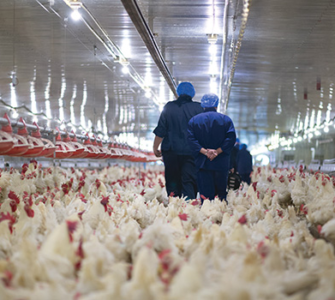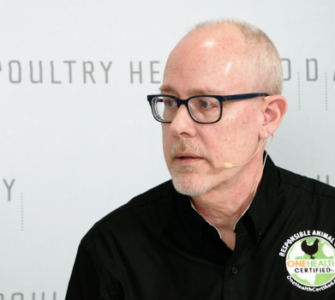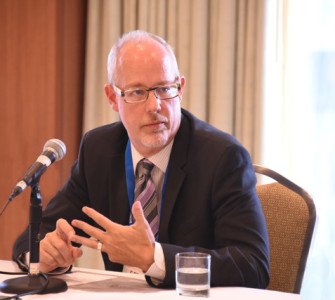One Health Certified label seeks balanced approach to poultry production, marketing
A new label under development for meat and poultry products will represent production that seeks a balanced approach to poultry production and marketing — one that ensures good health and welfare for the chickens while demonstrating responsible antibiotic usage under veterinary oversight to consumers, Don Ritter, DVM, director of technical marketing, Mountaire Farms, told Poultry Health Today.
Called One Health Certified, the new USDA Agricultural Marketing Service (USDA-AMS)-certified label is in part a response to arbitrary standards in production criteria, such as prohibiting the use of antibiotics to prevent, control or treat disease.
Ritter believes the supply chain from “no antibiotics ever” (NAE) production systems is not predictable nor sustainable. When the focus is only on never using antibiotics, the health of the animal suffers. There may be increased mortality. Those that survive require more feed and take longer to get to market, and the environment suffers too.
Okay but outdated
At the other end of the spectrum is what’s often referred to as “conventional” production, where veterinarians have the option of using all FDA-approved antibiotics for managing poultry diseases. This approach to production has declined in recent years as poultry companies have sought to meet increasing consumer demand for chickens raised without antibiotics.
The One Health Certified label advocates responsible use of antibiotics, where needed, while giving consumers an audited, transparent program built upon five core pillars: biosecurity, veterinary care, antibiotic stewardship, animal welfare and environmental measurements.
The program has “action thresholds,” which make it unique, Ritter continued. For instance, when the health status of an animal group changes, actions are required. If it’s a disease process, there has to be veterinary involvement within 24 hours, and animals are properly taken care of. Everything is documented.
There are similar but not identical guidelines for all species. “I see it as an umbrella program…over the multiple protein classes,” he said.
Sustainable, practical
Nothing will fall through the cracks in this system, Ritter maintained, but he acknowledged it will require poultry companies to provide documentation about production practices.
The program is intended to avoid extra costs for consumers and has options that make it sustainable and practical, Ritter said. Mandating extreme practices for the entire supply chain that raise the cost of food takes away choice from people who don’t have resources.
Consumer research with about 1,000 people has indicated that 83% would buy products with the One Health Certified label. Respondents said they most valued veterinary care and want animals taken care of, he said.
Saturated NAE market
Asked if the trend toward NAE production can ever be reversed, considering it now accounts for over 50% of the US poultry market, Ritter said, “To me, gravity is a very powerful force, and I really do think the pendulum swung a little too far…” when that much of production became NAE.
Even though over 50% of chickens are produced now in NAE systems, NAE chicken meat accounts for only 10% of pounds sold, Ritter noted. NAE producers are selling 20% of their meat labeled as NAE and they’re getting a premium, but the meat is more expensive because producers have to recover the cost of running that type of production system. That premium is being eroded as this segment of the market becomes saturated, he said.
One Health Certified, which has been designed by a coalition that includes animal agriculture, nonprofit groups and university scientists, will require education and supportive messaging. The goal is to get it through the USDA-AMS auditing process and launch a website. The certification will be open to any producer who follows the rules, Ritter said.
Posted on December 23, 2019

















